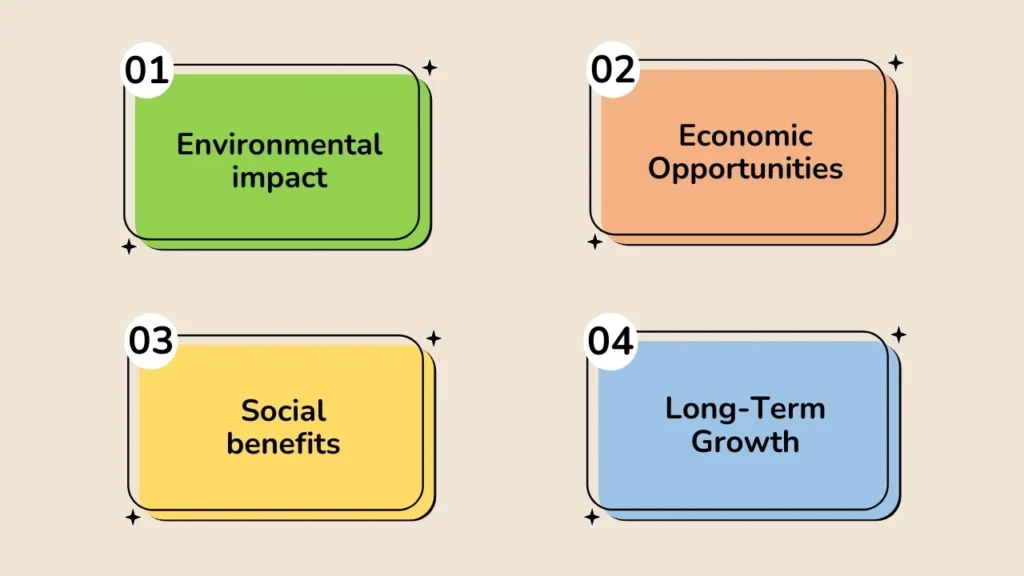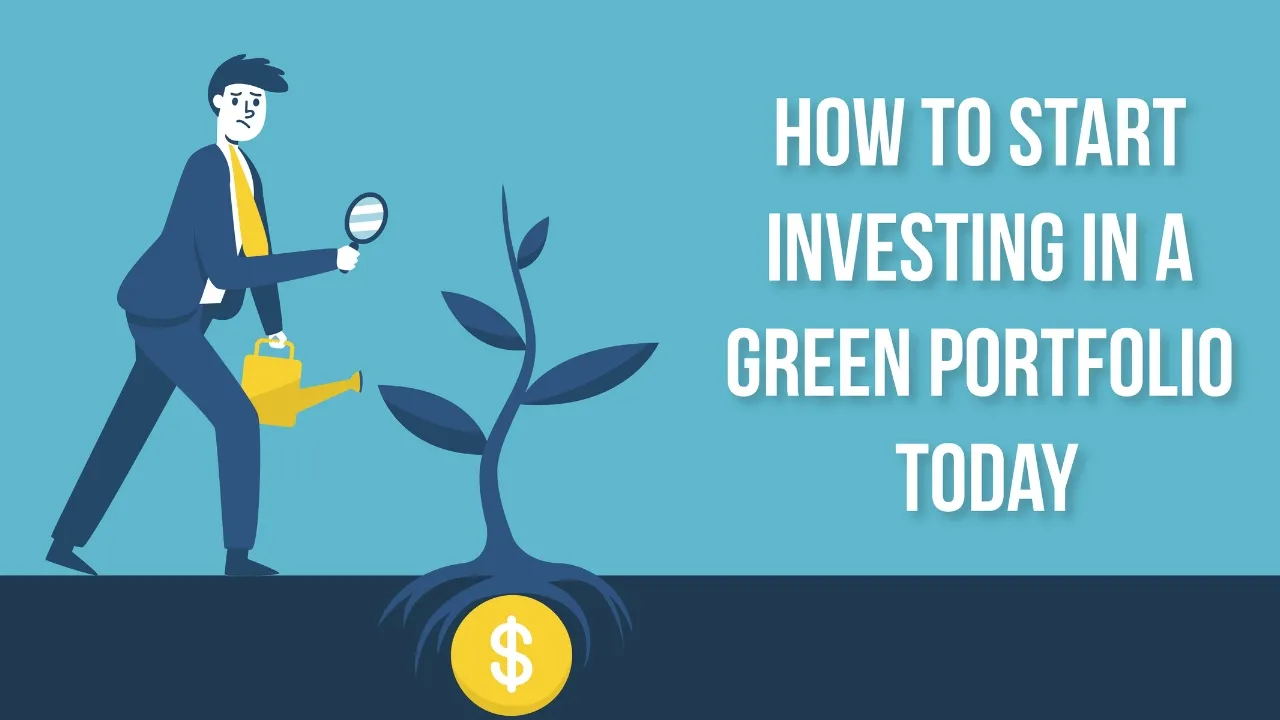Putting your money into a green portfolio is one of the most meaningful ways to build wealth and invest in companies and projects that place environmental sustainability at the core of their business.
If you’re wondering how to begin investing in a green portfolio today, this story is a no-nonsense guide about what a green portfolio looks like, why it matters, how to build one of your own, picking investments for that fund (or funds), managing the risks and tracking performance.
This isn’t just an investment approach that is looking for financial returns, but it is looking to have a positive outcome on the environment and society as well—investing in what you believe in.
Understanding a Green Portfolio
Green investing: A green portfolio is a highly selected mix of investments concentrating in companies or projects that show strong adherence to the environmental, social and governance (ESG) standards.
These investments typically focus on renewable energy, energy efficiency, sustainable agriculture, green buildings and pollution prevention. The objective of investing in a green portfolio is to promote sustainability while achieving acceptable financial returns.
Why Go for a Green Portfolio?

A green portfolio makes good financial sense. While investing in green is good for the planet, it is also a well-performing way to grow your money.
- Environmental impact: Invest solely in companies that reduce carbon emissions, preserve biodiversity and promote sustainable use of natural resources.
- Economic Opportunities: Gain from the expansion of green industries such as solar, wind, biofuels, clean coal and energy-efficient technologies.
- Social benefits: Support community health, local employment and social equity with your impact investment.
- Long-Term Growth: Companies that are sustainability-conscious may have more staying power and be better equipped to manage regulatory and market environment changes.
Building Your Green Portfolio
Starting your green portfolio follows the fundamentals of any investment fund but adds a specific environmental and social lens.
Step 1: Identify Your Goals and Tolerance for Risk
Know what you are trying to achieve financially, how long you have to reach it, and how much risk you are willing to take on. Are you looking to invest for long-term growth, retirement or short-term profit? Recognizing this should influence the asset allocation of your green portfolio.
Step 2: I have an investment account opened.
You need to hold your green investments somewhere, like a brokerage or retirement investing account. These may be traditional brokerage accounts, tax-advantaged accounts such as Individual Retirement Accounts (IRAs) or Roth IRAs in the U.S., or other types of retirement and/or savings accounts depending on the country.
Step 3: Look into Green Investing Choices
There are several vehicles that you can explore to get started on your green portfolio, such as
- Green Stocks: Stocks of companies with the best ESG (environmental, social and governance) in renewable energy, clean tech or sustainable goods.
- Green Bonds: Borrowed funds for projects that benefit the environment.
- ETFs and Mutual Funds: Investments that pool resources to invest in green sectors or companies.
- Impact Investments: Investments made with the intention to generate positive, measurable social and environmental impact alongside a financial return.
Step 4: Diversify Your Portfolio
Spread risk across asset classes, sectors and regions. Think about combining various types of green investments to maximize returns and mitigate risk.
Selecting Investments for Your Green Portfolio
Investing green now involves paying attention not just to financial numbers but also to sustainability credentials. Here are some of the important selection criteria for investments:
- High ESG ratings and an open book policy
- Proven commitment to environmental stewardship
- Good foundations for making money, growth, low debt
- Companies not investing in fossil fuels, deforestation or harmful energies.
- Active management/shareholder engagement on sustainability
The risk management is like other investment strategies, with additional consideration about how regulatory change affects how the transition happens and potential greenwashing and market moves around sustainability trends.
Common Types of Green Investments and Their Characteristics
| Type of Investment | Description | Risk Level | Return Potential | Common Examples |
|---|---|---|---|---|
| Green Stocks | Equity in sustainable companies | Moderate to High | Moderate to High | Solar companies, e-bike manufacturers |
| Green Bonds | Debt securities used for eco-projects | Low to Moderate | Moderate | Renewable energy infrastructure |
| ETFs and Funds | Pooled investments in green sectors | Moderate | Moderate | Clean Energy ETFs |
| Impact Investing | Investments intended to provide social/environmental results | Varies | Varies | Community solar projects |
Green Portfolio: Monitor and Assess Your Progress
Frequently check on the financial and ESG impact performance of your portfolio, such as carbon footprint reduction and sustainability ratings. They may need to be modified according to changes in objectives or market conditions.
Final Words
A green portfolio investment today is an impactful path to marrying financial growth with environmental stewardship. If investors define their goals, choose diversified sustainable investments, and monitor results carefully, they can invest in a healthier planet while producing wealth.
Start on your journey of building a green portfolio today so you can be en route to where the future is heading, all without sacrificing returns.
Frequently Asked Questions
1. What is a green portfolio?
A green portfolio is an investment in companies and projects that are committed to environmental, societal and governance factors.
2. How can I begin investing in a green portfolio?
Open an investment account, look up green stocks, bonds, ETFs or mutual fund options, set goals and determine your risk tolerance—then diversify and choose investments that are cataloged as sustainable.
3. Are green portfolios profitable?
Yes, green portfolios can achieve strong financial performance while having positive environmental outcomes—but their performance differs based on market conditions and specific investments.
4. Can I invest what little money I have in green portfolios?
Yes, there are ETFs and mutual funds that deal with green investing where you can get into it on the cheap with small investments, meaning it’s possible to achieve diversification even if you have relatively limited funds.
5. How can I prevent greenwashing in my investments?
Research companies for ESG credentials, encourage transparent reporting or third-party certification, and choose funds with stringent screening to reduce the risk of greenwashing.

Leave a Reply